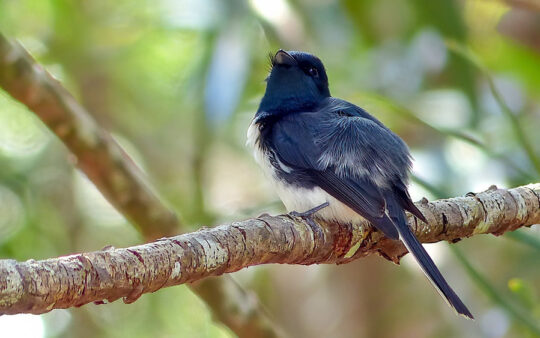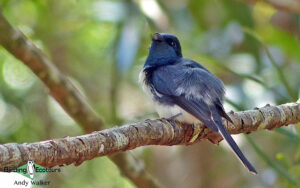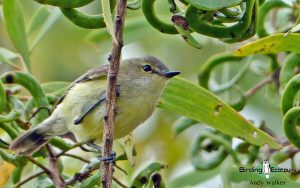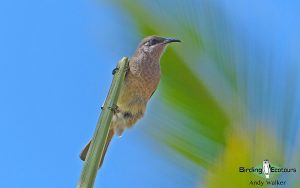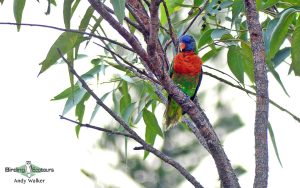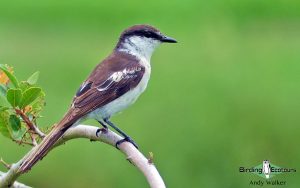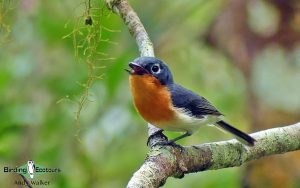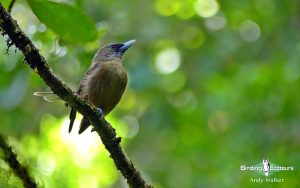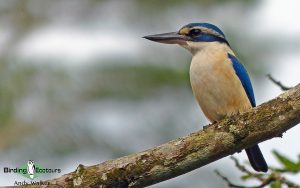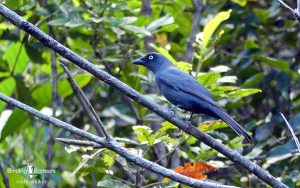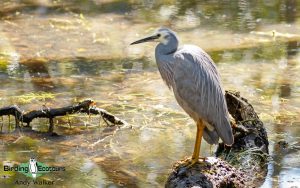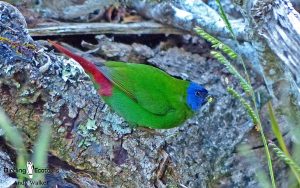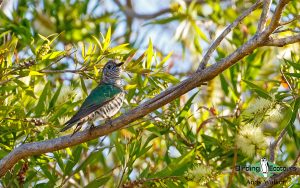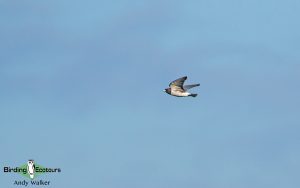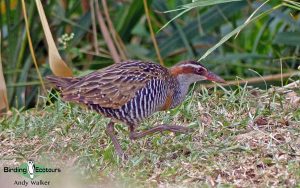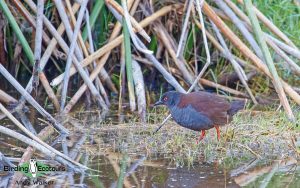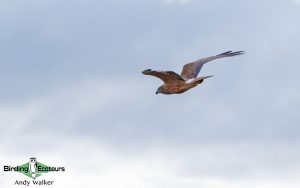Vanuatu Birding Tours
Our bird watching tours to the Republic of Vanuatu (Vanuatu hereafter) offer visiting birdwatchers the opportunity to see threatened and beautiful species rarely seen by international birdwatchers. On our Vanuatu birding tours we seek birds endemic to Vanuatu, and others endemic to the Melanesian region, within a comfortable and relaxing setting. Vanuatu is a relatively untouched paradise, with its volcanic mountains, lush rainforests, pristine beaches, impressive waterfalls and diverse reefs, little visited by tourists.
Vanuatu is an archipelago country comprised of more than 80 islands stretching approximately 800 miles (1,300 kilometers) from north to south, which lie south of the equator in the southwest Pacific Ocean. Vanuatu is located within Melanesia, one of the regions of Oceania, positioned about 540 miles (870 kilometers) southeast of the Solomon Islands, 690 miles (1,100 kilometers) west of Fiji, 300 miles (500 kilometers) northeast of New Caledonia, and 1,090 miles (1,750 kilometers) northeast of Australia. Vanuatu has a population of around 300,000 and the Ni-Vanuatu, the native Melanesian people, make up the majority of the population. Much of this population lives in rural villages, some in remote tribal communities, though around a sixth of the population reside in Port Vila, Vanuatu’s main political and urban center on the island of Efate. The country’s social structure is deeply rooted in tribal affiliations, with many communities maintaining ancient traditions and practices. The vibrant cultural heritage of Vanuatu is celebrated through various festivals, music, dance, and traditional ceremonies.
Read More About Vanuatu
Vanuatu was first settled by Austronesian-speaking Melanesians around 3,000 years ago, who developed complex societies and a rich cultural heritage across the islands. By the late 19th century Vanuatu became a territory under joint British and French administration, known as the New Hebrides, which led to significant cultural and economic change. Vanuatu was affected by World War II when the islands were occupied by Japanese forces and subsequently became a base for Allied military operations. Vanuatu gained independence to become a sovereign nation in 1980, and the country’s name reflects this: ‘Vanua’ means land or home in Austronesian, and ‘tu’ means to stand, conveying the independent status of the country. Now, Vanuatu is emerging as a popular eco-tourism destination, but the country maintains a strong focus on preserving its Melanesian culture and traditions, and unique biodiversity.
Following International Ornithological Congress (IOC) taxonomy, v14.1 (June 2024), the Vanuatu bird list is 188 species, with 10 of these being endemic, though one, Tanna Ground Dove is now considered extinct. Five are regularly seen in the lowlands; Tanna Fruit Dove, Vanuatu Kingfisher, Buff-bellied Monarch, Vanuatu White-eye and the iconic yet elusive Vanuatu Megapode, in addition to the near-endemic Vanuatu Streaked Fantail. The recently split Vanikoro Island Thrush can be found across Vanuatu but is rare and elusive. The other country endemics occur at higher elevation, being specialists of montane rainforests, and require a multi-day hiking expedition through remote mountain ranges to see Vanuatu Imperial Pigeon, White-bellied Honeyeater, and Santo Thicketbird occasionally range to lower elevations, but are otherwise found by those who reach the right altitude and habitat, while Mountain Starling has only been recorded by a handful of observers over the last few decades. Aside from these rarely targeted country endemics, Vanuatu hosts 15 species endemic to Melanesia, and the ultra-rare Santa Cruz Ground Dove, Palm Lorikeet and Rusty-winged Starling which can only be seen in Vanuatu, or in the neighboring Solomon Islands.
Our short but endemic-filled tour of Vanuatu visits the largest island of Espiritu Santo, the only island which holds all of Vanuatu’s endemic species. Espiritu Santo is a hidden gem, with its lush rainforests, turquoise waters, and untouched beaches, it is a beautiful and seldom-visited destination. During our tour we stay in a peaceful beachside resort which offers comfort, great food, and warm hospitality. The tour finishes with some birding in a beautiful location on the island of Efate, the economic and political capital of Vanuatu. Our tour focuses on seeing the five lowland endemics such as the stunning Tanna Fruit Dove and Vanuatu Kingfisher, and shy Vanuatu Megapode, alongside 14 species endemic to Melanesia including Red-bellied Fruit Dove, Cardinal Myzomela, and Southern Shrikebill. We visit the highest accessible altitude possible by road in hope of encountering some of the montane rainforest specials such as Vanuatu Imperial Pigeon, or White-bellied Honeyeater. For adventurous birders we can organize a longer trip to target all of Vanuatu’s endemic species, including the near-mythical Mountain Starling, but this is not for the faint of heart as it requires an expedition to Espiritu Santo’s mountainous heart.
Download Vanuatu Itineraries
Vanuatu: Pacific Islands Extension August 2026/2027
